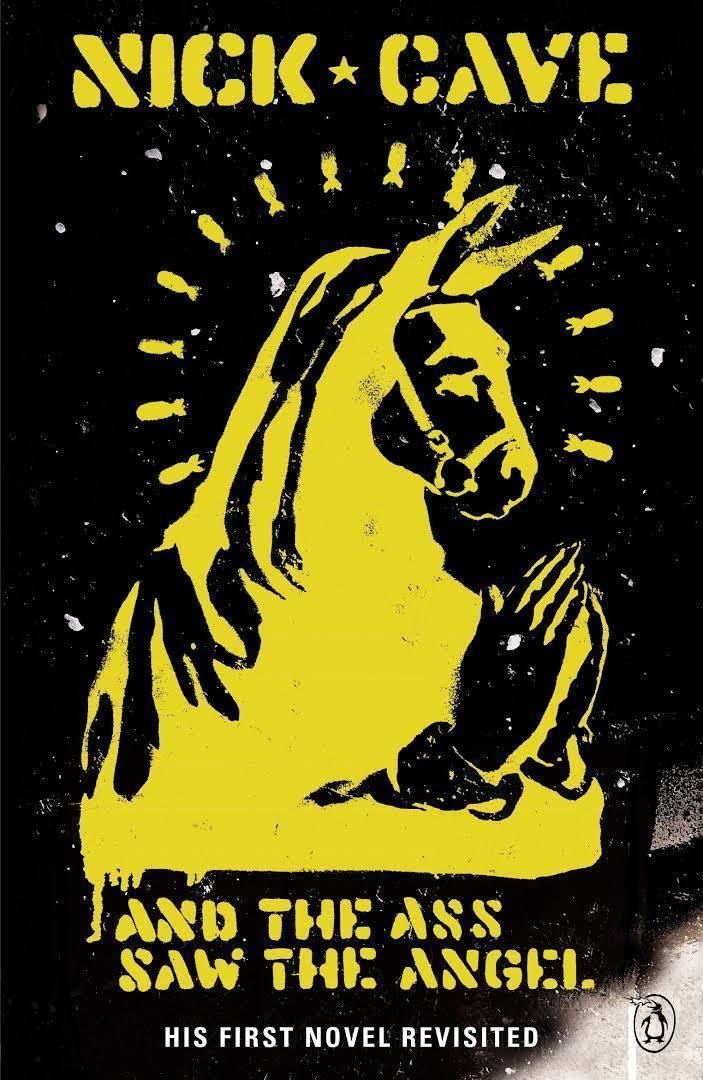7.8 /10 1 Votes7.8
Language English Pages 320 pp Originally published 1989 Country United Kingdom | 3.9/5 Goodreads Publication date 1989 ISBN 1-880985-72-1 OCLC 51528255 | |||||||||||||||||||||||||||||||||
 | ||||||||||||||||||||||||||||||||||
Media type Print (hardback & paperback) Similar Nick Cave books, Novels | ||||||||||||||||||||||||||||||||||
Nick cave reads from his book and the ass saw the angel
And the Ass Saw the Angel is the first novel by the Australian musician and singer Nick Cave, originally published in 1989 by Black Spring Press in the United Kingdom and Harper Collins in the United States. It was re-published in 2003 by 2.13.61. A luxury "collector's edition" was released, in the summer of 2007, by Black Spring Press.
Contents
- Nick cave reads from his book and the ass saw the angel
- Nick cave interview and the ass saw the angel
- Plot
- Major themes
- Awards and nominations
- Publication history
- Readings
- References
The title is a biblical quotation from the Book of Numbers, Chapter 22, Verses 23-31: "And the ass saw the angel of the Lord standing in the way, ...". With its Southern Gothic setting, critics have compared it favorably with novels by American authors William Faulkner and Flannery O'Connor.
Cave's second novel, The Death of Bunny Munro, was published in September, 2009.
Nick cave interview and the ass saw the angel
Plot
And the Ass Saw the Angel tells the story of Euchrid Eucrow, a mute born to an abusive drunken mother and a father obsessed with animal torture and the building of dangerous traps. The family live in a valley of fanatically religious Ukulites, where they are shunned. Euchrid's mental breakdown includes horrific angelic visions, and the story builds towards Euchrid exacting terrible vengeance on the people who have made him suffer.
Major themes
The lyrics of some of the songs from the first few albums of Nick Cave and the Bad Seeds (From Her to Eternity, The Firstborn Is Dead and Your Funeral... My Trial), are extensions of the ideas represented in the novel. The title comes from the Bible, the Book of Numbers 22:23, where Balaam does not see the angel of the Lord but his donkey does. The Bible is heavily referenced throughout the novel. In an interview with BOMB magazine, Cave noted, “There are a number of voices in the book: first person narrative by Euchrid, third person authorial voice, quotations usually from the Bible, either real or ersatz, constant changes in tone or approach to language, depending on who is talking. When I first started the book there were certain elements I wasn’t interested in reading about. When you read a novel, you have to wade through the setting up of the scene before the story starts. So I wrote a long prologue. It has no action. It includes documentary, poetry, maps and charts, in very short chapters. Once this is done, the actual story begins. The voice then changes between the narrator’s truth and Euchrid’s delusionary truth. The final book is Euchrid’s monologue which runs to the climax” The book is narrated in the protagonist's silent Southern drawl, which Cave writes in eye dialect.
One particularly present theme is Man's inhumanity to man and their innate ability to fear what they do not understand. Euchrid is constantly under siege from those who perceive difference as a threat. The only other character to see Euchrid as something more than a dumb beast is Beth (and to a certain extent, her mother). Though Beth is taken into the fold by the Ukulites, she too is different from the rest. There is a strange transference of thought throughout the novel; her difference is seen by the community as godly, while Beth sees Euchrid as godly. Another theme presented in the novel is the beauty of things perceived as ugly. In an interview with director Lindzee Smith, Cave revealed, “The things that are ugly are supposed to be ugly. I’d hate to think the book was only about ugly things. It’s about innocence as well ––the beauty in that. There’s a cartoon image to many of the characters––Beth, who I see as the idealized young girl, perfect and innocent, seen through the obsessive eyes of Euchrid.”
Awards and nominations
Publication history
Readings
Cave did many public readings before and after the publication of the book, sometimes accompanied by various musicians. A selection of readings was released as a bonus 12" with the original release of the Tender Prey album: "Mah Sanctum", "Lamentation", "One Autumn" and "Animal Static". In 1998, Mute records released these same four chapters, together with music by Mick Harvey and Ed Clayton-Jones on CD as "And The Ass Saw The Angel" (EUCHRID1).
